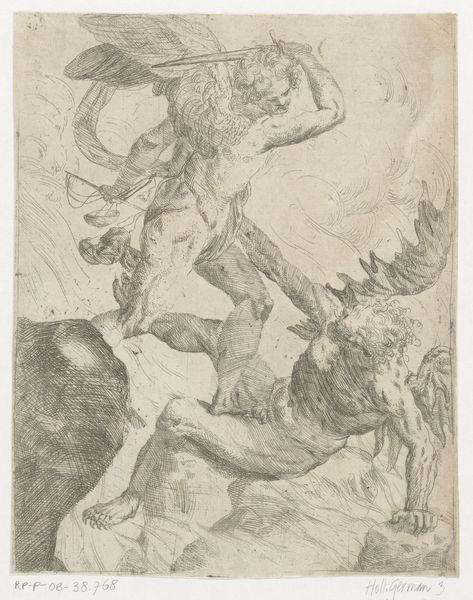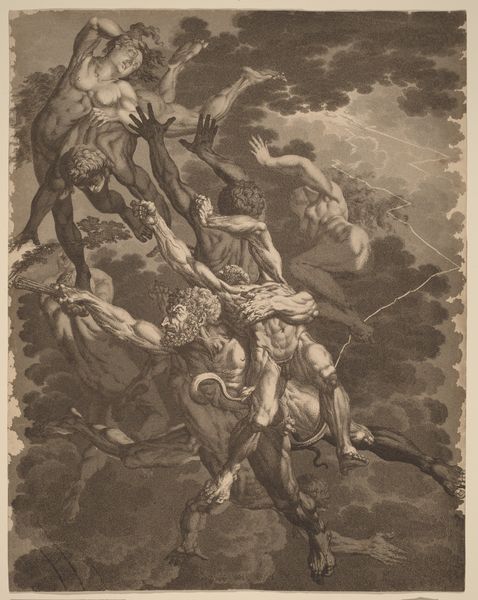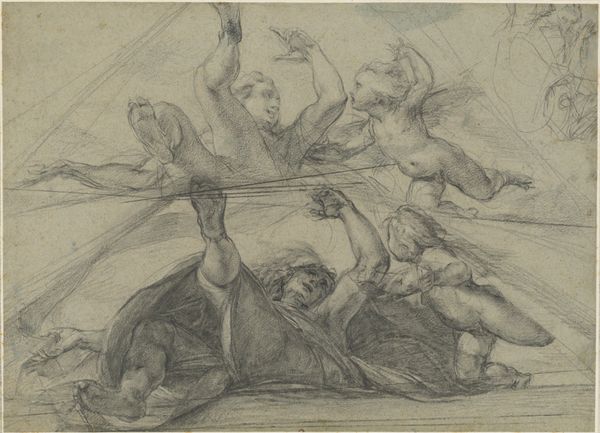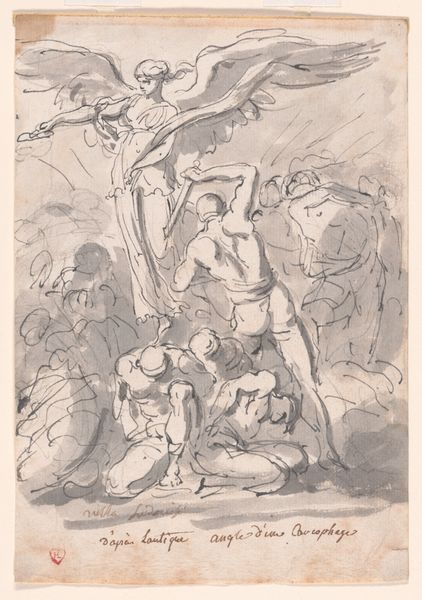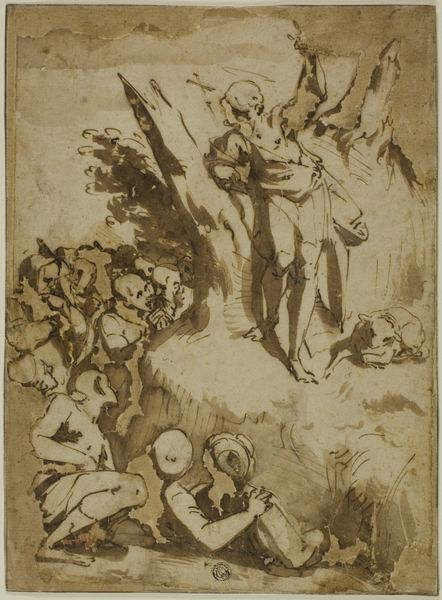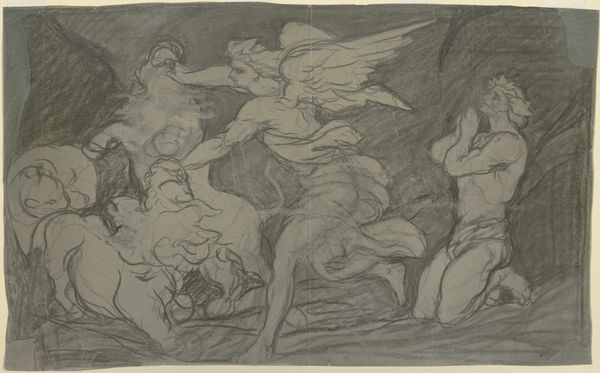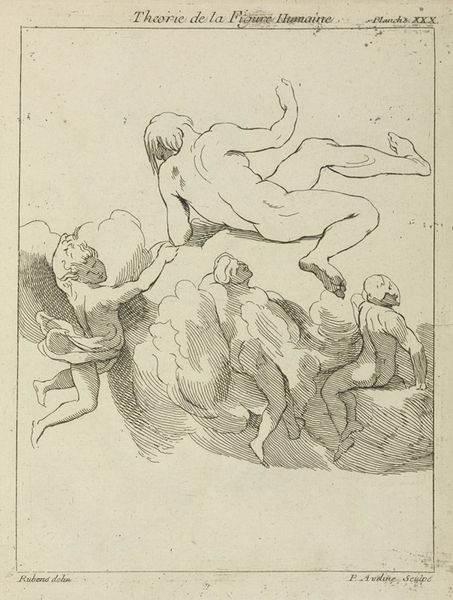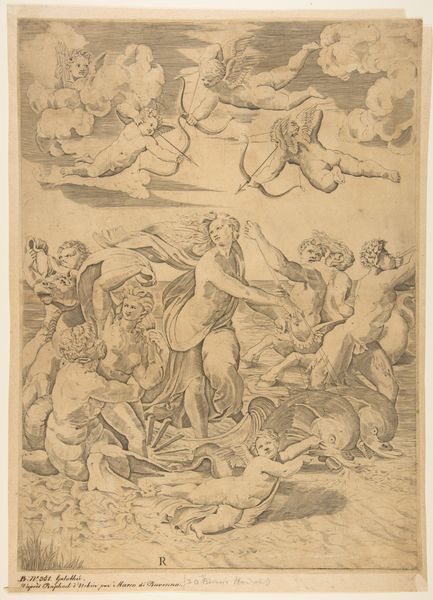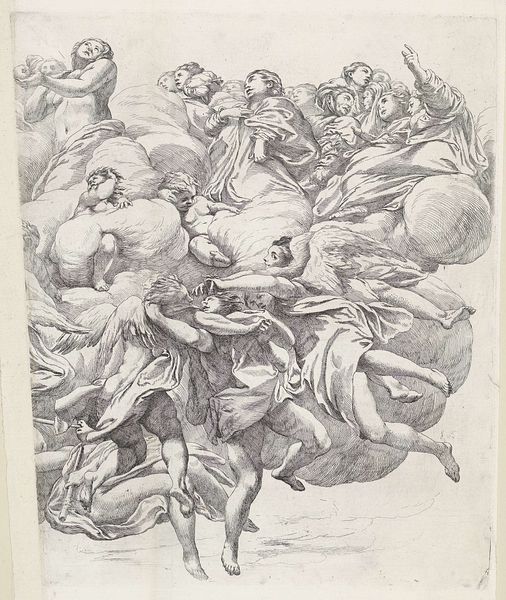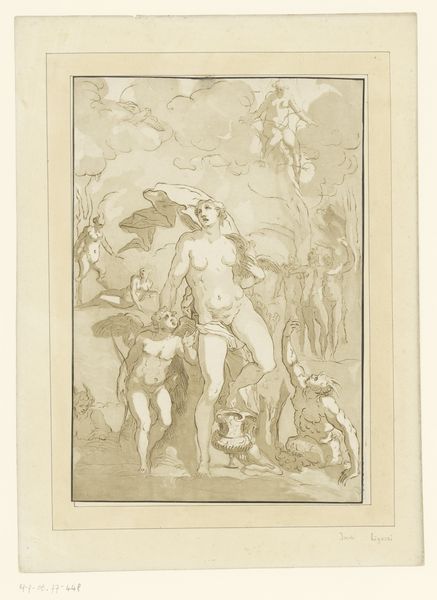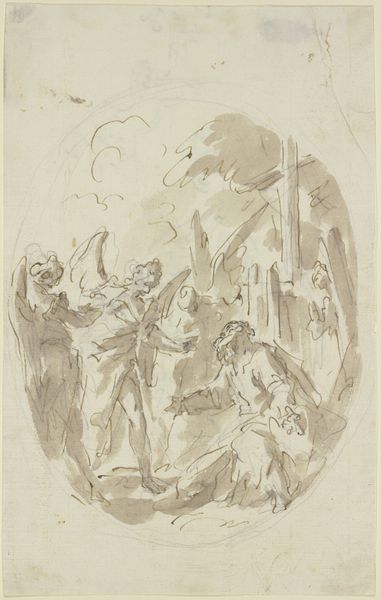
Polyphemus Throwing Boulder at Acis, with Galatea (recto), and Pholyphemus Lifting Boulder (verso) n.d.
0:00
0:00
drawing, print, etching, paper, pencil, chalk
#
drawing
#
allegory
# print
#
etching
#
pencil sketch
#
landscape
#
classical-realism
#
etching
#
figuration
#
paper
#
pencil
#
chalk
Dimensions: 428 × 289 mm
Copyright: Public Domain
Curator: William Taverner is the artist behind this work; it's a drawing of "Polyphemus Throwing Boulder at Acis, with Galatea," created with pencil and chalk, existing in two versions on the recto and verso sides. What springs to mind for you initially? Editor: Chaos! A storm of bodies, rendered in shades of gray like a fading dream. There’s a raw, kinetic energy, even though it’s just chalk and paper. What about you, any symbolic gut reactions? Curator: Absolutely, the grey palette really highlights a sense of antique tragedy playing out. Polyphemus, in his jealous rage, becomes a primal force. He’s not just throwing a rock; he's attempting to shatter the idyllic union of Acis and Galatea. We often find this narrative, the monstrous interfering with love. It speaks to inherent conflicts present in society. Editor: Yes, he really captures something fundamental, that brutal, possessive side of human nature. The grouping of figures in his depiction certainly enhances that feeling. It has a dreamlike atmosphere, yet so tangible and emotive. The sheer violence contrasts sharply with the delicate lines, almost as if he's tracing something ancient etched deep in the collective psyche. What purpose would these drawings have served for Taverner at the time? Curator: Knowing the date is unclear, we might propose a preliminary sketch towards a grander, potentially unrealized, composition. Taverner’s art often engaged with mythology. Think of Polyphemus as a visual representation of unchecked emotions, while Galatea and Acis represent purity and beauty. We witness it even today; figures, in positions of power abusing that role, becoming almost bestial in their disregard for justice. Editor: So, it’s more than just a story of gods and monsters; it is an enduring representation of destructive obsession, laid bare through simple lines. There is something deeply and uncomfortably human at the center of it all. I’m sure I’ll see it in tomorrow’s news too! Curator: It's a stark reminder of the destructive potential within us, and how these stories, visually coded over centuries, retain their disturbing power. Editor: I guess we can only hope it doesn't repeat, or at least remember the story the next time someone has their hands on a large rock.
Comments
No comments
Be the first to comment and join the conversation on the ultimate creative platform.
